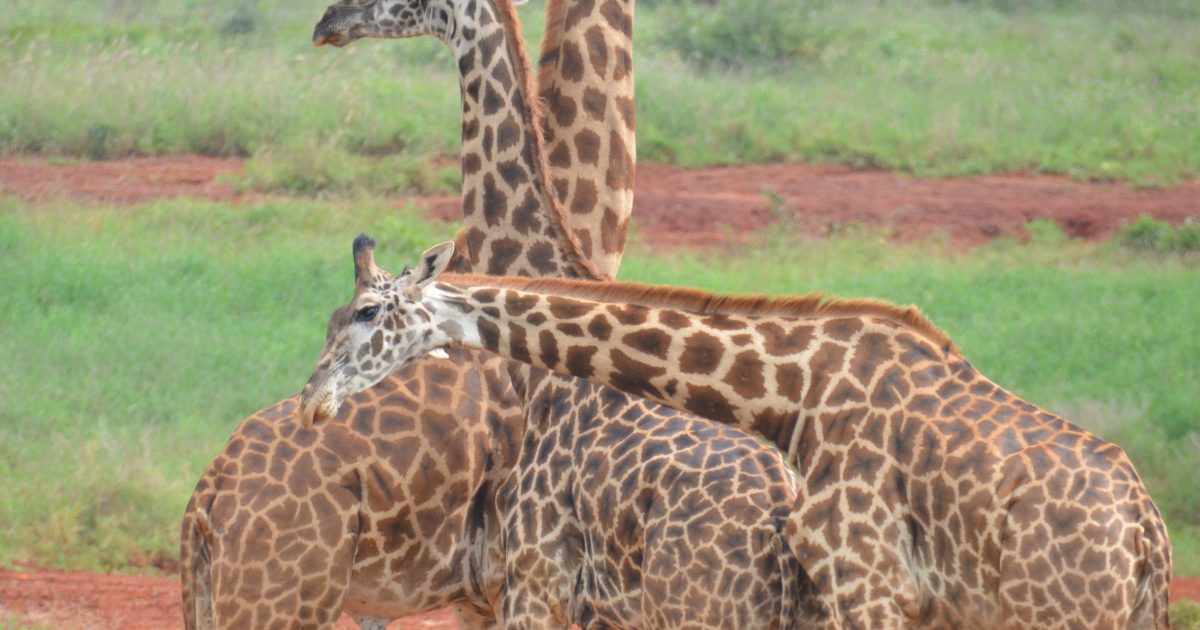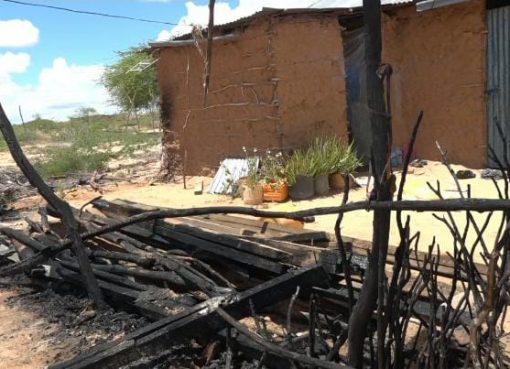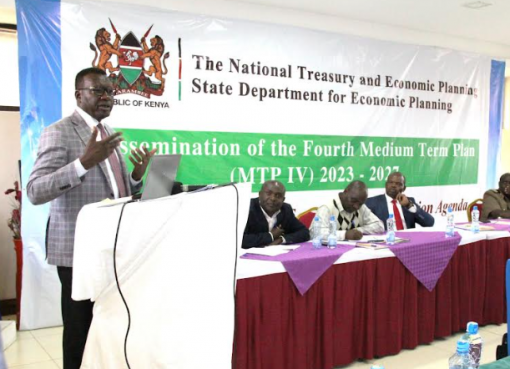She is not amongst the Big Five. Her face does not appear in the Coat of Arms. Her lithe and graceful shape is yet to adorn the outer surface of KQ planes’ fuselage. Still, she remains one of the most photographed animals in the wild. For centuries, she has stood tall over the sprawling Savannah bushland; a towering beauty that forever strides across expansive landscapes across the country in breath-taking majesty and splendor.
“She is a critical player in the wildlife ecosystem. Our efforts should be pooled together to guarantee her survival,” says Mr. Amos Chege, a wildlife specialist working as Project Officer in charge of Species Conservation for African Wildlife Foundation (AWF).
Mr. Chege is referring to Maasai Giraffe; an iconic sub-species of the giraffe family that conservationists warn is under critical threat from poaching, climate change, habitat loss from improper land use, diseases, burgeoning human population and electrocution from electric fences by farmers living adjacent to areas with wildlife.
To a casual eye, data on giraffes in Kenya could be deceptively comforting. According to the National Wildlife Census 2021 Report, the country has a total population of 34,240 giraffes. These are classified under three sub-species namely Reticulated (also known as Somali giraffe); Maasai (also known as Kilimanjaro giraffe) and Rothschild (also known as Uganda or Baringo giraffe)
The highest number of giraffes belong to the Reticulated species at 17,740 members followed by Maasai sub-species at 13, 372. The Rothschild’s giraffe has the lowest population at 768. Due to the terrifyingly few members of this last category, the International Union for Conservation of Nature (IUCN) categorized Rothschild’s giraffe as an endangered subspecies. Both Maasai and Reticulated giraffes are classified as Least Concern (LC) implying a stable population.
The Maasai giraffe is a legendary transboundary traveler known for roaming hundreds of kilometers across landscapes in neighbouring countries. Experts say the animals in Tsavo National Park in Kenya often cross over to Mkomazi National Park in Northeastern Tanzania, Those in Amboseli National Park migrate to Kilimanjaro and Logindo in Tanzania while giraffes in Maasai Mara shuttle between Kenya and Serengeti. Maasai giraffes are also found in Naivasha and Nairobi.
Tsavo landscape alone carries 4,300 giraffes constituting around 30 percent of the nation’s giraffes’ population.
Strangely, giraffes are not listed under the Convention of International Trade in Endangered Species (CITES). CITES is a global conservation watchdog that constantly monitors populations of plants and species particularly those traded at the international market. The absence of giraffes in this critical list is attributed to the possibility that illegal trade on giraffe skins and other products remains largely a localized criminal enterprise and thereby fails to attract CITES’s global scrutiny.
This has unwittingly created a false impression of giraffes as a wildlife species that is thriving and therefore might require little attention from both regional and international conservation players.
The National Recovery and Action Plan for Giraffe in Kenya 2018-2022 shatters such a notion. The document paints a bleak portrait of this iconic species. It states that giraffes’ population in the country has gradually dropped from over 45,000 individuals to less than 35,000 in the last thirty years.
This decline has prompted wildlife experts to appeal for urgent intervention from government and conservation stakeholders as a way of boosting species population and tackling the factors that have contributed to this biodiversity loss.
“Those factors that threaten giraffes in the wild are with us today. Such threats need immediate attention,” says Mr. Chege.
One of the most deliberate steps adopted to secure the Maasai Giraffe is the formation of Tsavo Landscape Giraffe Range Committee. This committee consists of wildlife experts and scientists drawn from Kenya Wildlife Services (KWS), Wildlife Research and Training Institute (WRTI), African Wildlife Foundation (AWF), Wildlife Works and Tsavo Conservancies amongst others.
Some of the duties the committee is tasked to do is to jointly formulate range-specific interventions to address unique threats facing this animal. The committee will also guide the implementation of strategies to protect the Maasai Giraffe in the Tsavo Landscape.
While opening a session for the committee in Voi on Monday, Tsavo East Senior Warden Wilson Njue spoke of the need to design workable strategies to not only safeguard the population of Maasai giraffes but also present an opportunity to shore up the current numbers.
“This committee is intended to create a synergy in our joint operations that are geared towards promoting the wellbeing of this giraffe while in the wild,” he said.
The meeting also captured a myriad threat facing Maasai giraffes in Tsavo Landscape. Most were common threats identified in the National Recovery and Action Plan for Giraffe in Kenya like loss of habitat and fragmentation, poaching, diseases, climate change, infrastructural development and inbreeding. However, the Tsavo committee cited additional threats in the region posing critical danger to the wellbeing of the animal.
One prominent current threat cited is the rise in electrocution of giraffes by high-voltage electric fences erected by farmers and ranchers in a bid to protect their livestock and crops from destruction by wild animals.
Chege termed the increasing electrocutions as worrying owing to the fact that more people are adopting electric fences as a long-lasting solution to the menace of human wildlife conflict. He called for a compressive audit on the types of electric fences used by farmers.
He explained that proper electric fences were designed to deter wild animals and not kill.
“Giraffes are getting increasingly electrocuted by unsuitable electric fences that carry abnormal voltage. There is a need to conduct an audit on the electric fences in wildlife areas to ascertain if the voltage is safe for animals,” he said.
The committee also agreed on comprehensive cross-agency data sharing on giraffes to enhance coordinated action and response. Formation of a centralized database on the giraffes to aid in action and involvement of conservancies in protection of this sub-species were also agreed upon.
Mr. David Kimutai, KWS senior scientist for Tsavo landscape, called upon the stakeholders to work in harmony and enable the committee to meet its objectives.
By Wagema Mwangi





